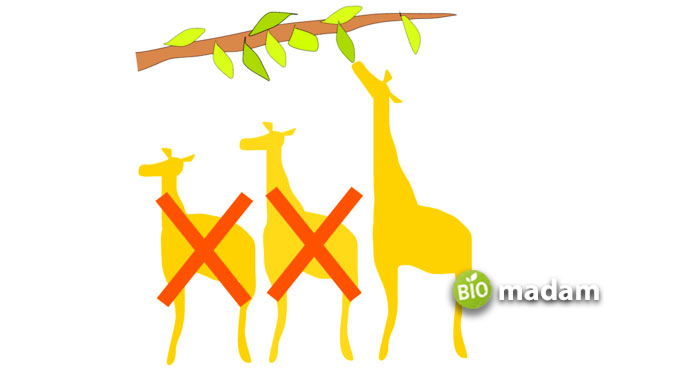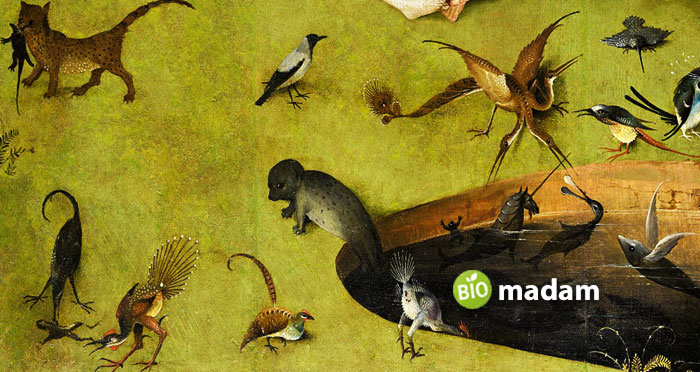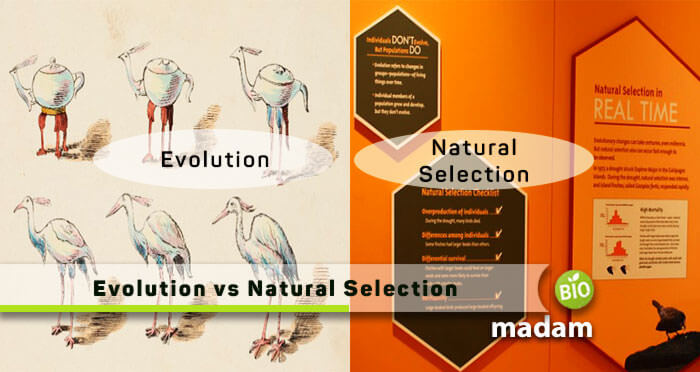Before starting the difference between evolution and natural selection, we will first briefly overview both of them. For the past many generations, evolution is considered an incremental change in the characteristics of a population. Whereas, in natural selection, individuals in a population naturally pass on their genes along with having more survival chances. These members of a population, who perfectly fits in the environment, are all selected through the mechanism of natural selection.
So the key difference between evolution and natural selection is discussed as; evolution is all the changes in the genetic traits of a population over succeeding generations, while natural selection is the “survival to the fittest” among other species in an environment.
We have presented a comparison table below before moving further, so let’s have a look!
Comparison Table
| Evolution | Natural Selection | |
|---|---|---|
| Definition | It occurs due to the continuous variations and diversifications coming from the past generations | In this process, the individuals are naturally selected by the environment that fits in perfectly! |
| Driven by | By natural selection | Driven by new characters that are the results of mutations |
| Occurrence | By overproduction, struggle for survival, natural selection, etc. | By the variations in genes of a population |
| Duration of Action | Acquires millions of years | Can be done in a short duration |
| Example | Darwin’s finches, bright-colored peacocks, Mexican cavefish, etc. | Tree-frogs are mostly eaten by snakes, giraffes with short and long necks, etc. |
Explain Evolution
Evolution is defined as a population extending from the same ancestors who continuously were in the process of branching and heterogeneity. It can occur in both small-scale areas and large-scale areas. Evolution for such scales is termed microevolution and macroevolution, respectively. Alterations in most genetic frequencies lead to macroevolution.
Such an evolution type happens because of genetic flow, mutation, natural selection, genes drift, etc., within the species level. Moreover, macroevolution is linked to natural selection, such that genetic traits in a population are changed under its influence. On the other hand, macroevolution is held above the species level, where its patterns include character changes, stasis, extinction, and specification

Explain Natural Selection
As the name suggests, natural selection is the key procedure that helps organisms to survive in a population of different species and subspecies. It also reaches more of their generation by adapting the environmental changes. This mechanism is driven by evolution, which was a fabulous idea by Charles Darwin. Darwin’s theory of natural selection involves four main processes, such as inheritance, variation, differential survival & reproduction, and the increased rate of population growth.
A very famous environmental adaptation w.r.t natural selection is the adjustment of moths with the industrial revolution. Due to the pollution and darkened trees, most of the lichens and light-colored moths were killed. That’s when dark-colored moths were selected by the environment.

Key Similarities Between Evolution & Natural Selection
A Result of Extended Environmental Changes: Both these evolution and natural selection results due to long-term environmental changes
Effects All Species
Every individual and every species in an ecosystem will undergo changes due to evolution and natural selection.
Influences the Genetic Traits
Either its evolution or natural selection, both target the genetic traits of a certain population rather than the individual itself.
Brings Alterations for Succeeding Generations
Both of the processes are responsible for inducing generation-after-generation changes.
Two Extreme Ends
Evolution and natural selection, both end up with either existence or death of a population.
Differences Between Evolution & Natural Selection
1. Definition
Evolution
A process where organisms originated from the same ancestors who tend to divide and diversify continuously is called evolution.
Natural Selection
The process by which organisms of a population survive to live in space and produce offspring. Here, the fight is about the survival of the fittest!

2. Significance
Evolution
This process revolves all-around natural selection and is driven by it.
Natural Selection
It promotes new characteristics of a generation that are the result of mutation.
3. Occurrence
Evolution
The common factors of occurrence of evolution are overproduction, natural selection, the struggle of existence, etc.
Natural Selection
It occurs due to the genetic mixing of chromatin or chromosomes by crossing over alleles that produce variations.
4. Time of Action
Evolution
This process requires several decades to produce changes in the environment.
Natural Selection
Some distinct changes are seen in a short time interval by natural selection.
5. Examples
Evolution
Some famous examples of evolution include a reduction in the human brain size, diminished human tail bones, and decrease in the pinna, etc.
Natural Selection
Some common examples are neck sizes of giraffes, light and dark-colored moths, etc.
Conclusion
From the above article, we concluded that both these procedures are the key source of bringing alterations in the genes of existing populations. Despite knowing the differences between evolution and natural selection, it is clear that both are affected by gene drift, genetic flow, mutations, etc. They are interlinked such that natural selection significantly drives evolution and produces after-effects. All in all, both are natural processes, important for human survival.

Hello, I would like to introduce myself to you! I am Chelsea Rogers, an experienced blog writer for science articles, holding an MPhil degree. My enthusiasm to grab the best knowledge, let it relate to botany, zoology, or any other science branch. Read my articles & let me wait for your words s in the comment section.

